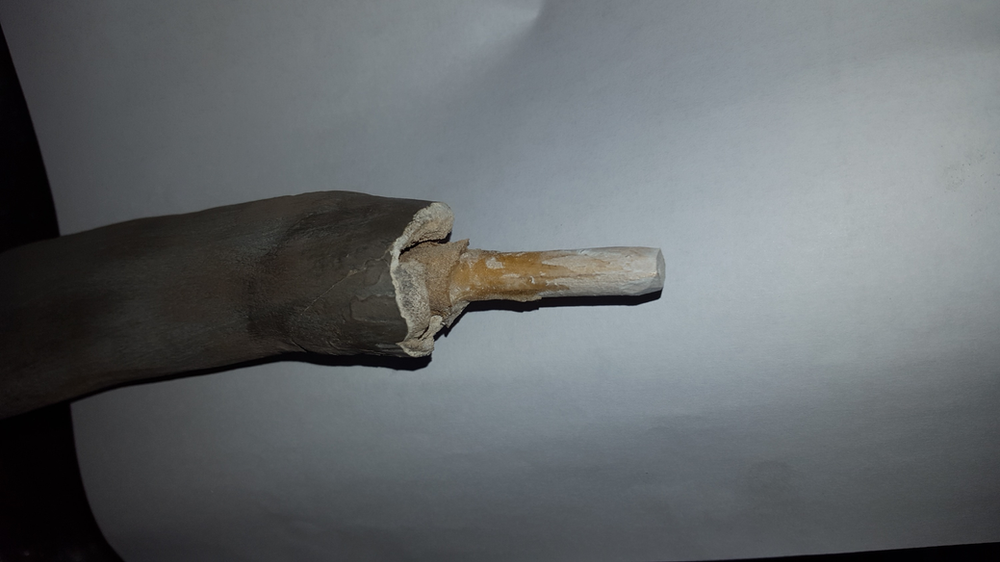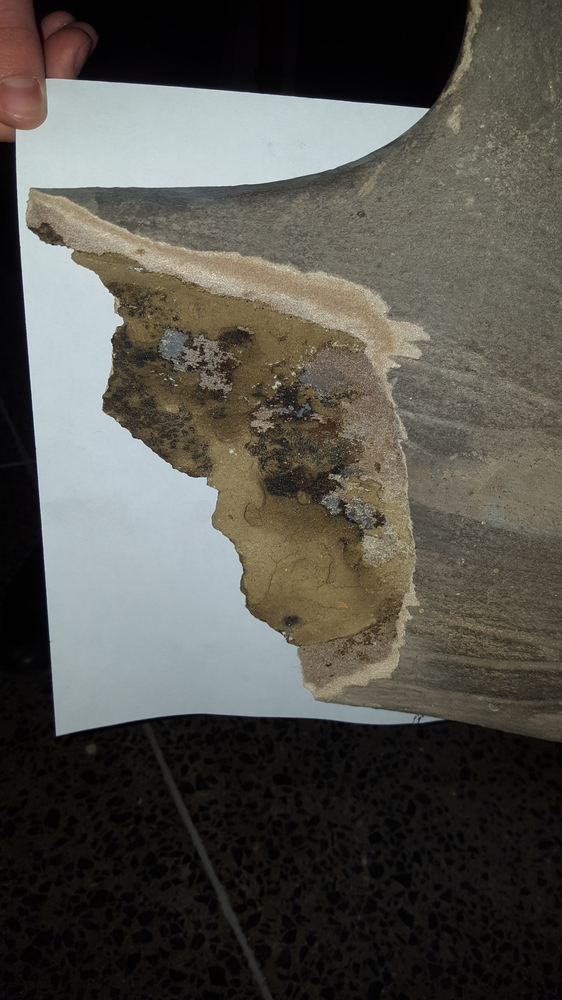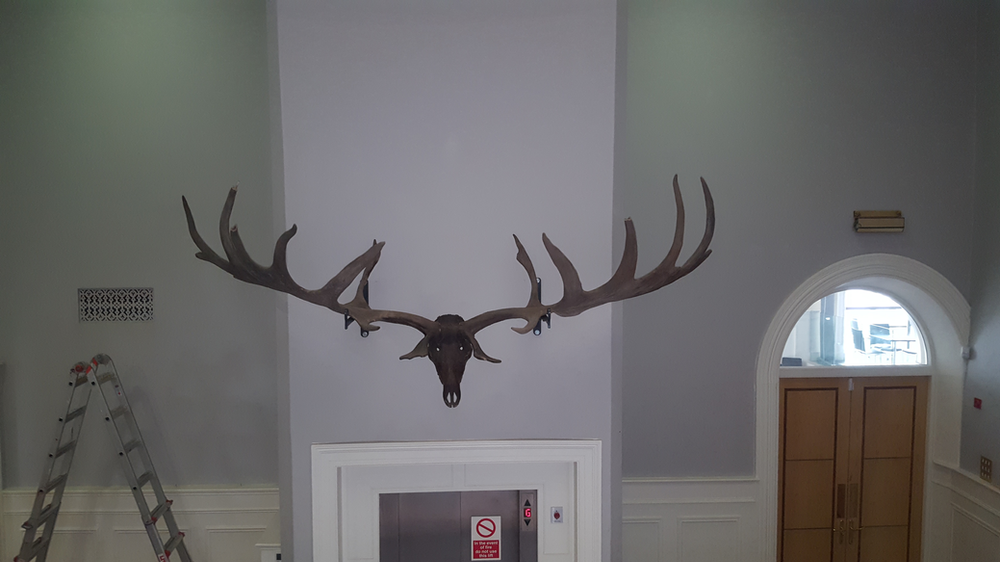
As many of our followers will remember, this past Autumn we received a very exciting addition to the collection that immediately caused a stir: our Irish Elk Antlers! (Need a quick refresher: check it out here: https://waterfordtreasures.wixsite.com/wattreasuresblog/post/object-in-focus-irish-elk-antlers )

Now, as we have explained before, the name “Irish Elk” is in fact a misnomer, caused by an attempt to identify an animal which no longer existed in the seventeenth century, when they did not believe extinction to be possible. The antlers were too large to have belonged to a deer as they looked in 1686, so it was assumed that the animal had to be some kind of moose or elk. So in the spirit of getting things right, I’ll be calling him a Giant Deer from now on!

Often when an object comes into the museum, either as a loan or a donation, some work has to be done before it can go on display. Part of the work of a museum is not just preserving items for future generations and displaying them to the community, but conserving them. For larger objects, like the Giant Deer antlers, at least some damage is expected. Pairing this with the fact that antlers are of course made of skeletal material, it was unlikely that we were going to get away without a few breaks.

Once the antlers were un-boxed it became clear quite quickly that we had at least one broken tine. A gentle feel-around through the layers of bubble-wrap protecting them then confirmed that we had at least three more – one of them quite large. The immediate fear here was that they had been broken in transit or while being packed, but in any case, we had to have them repaired.
With conserving something like this, it is usually a very specialist process, not just anyone is trained to repair Giant Deer antlers! Fortunately, here in Ireland we are lucky to have an abundance of these majestic artefacts, and so we were able to contact a firm with wide experience in making similar repairs. However, in the meantime, the antlers had to go up on the wall for their protection (with an artefact of this size storage can be tricky, and spending too much time on the floor of City Hall is not exactly good practice) so they had to be unwrapped!
The process of conservation is not strange to people anymore with the rise of social media and sites like YouTube, where people share videos of their crafts, and painting conservation is especially popular for people looking to relax and watch slow methodical work (Check out Baumgartner Restoration if you ever have trouble sleeping!), but conservation is far from a modern process.
The oldest museums in the world were set up in 2500 years ago; and the oldest still extant museums are the Capotiline Museums with a history dating back to 1471, so people have been displaying art and artefacts for thousands of years already, but the modern museum really started to take off during the Victorian period – as did conservation.
Now, what became immediately obvious when the first break was revealed was that this was not a new break – and we all breathed a sigh of relief. Aside from the broken piece of skeletal material, there was a very clear wooden dowel connecting this piece to the larger set, which means that someone had fixed this before!

As some of you may remember from our last look at these fascinating antlers, this set is the largest in the world, and hung for many years over the entrance of Adare Manor. As a result of them being from a private collection, we have no record of when/ where they were found, or whether they had ever suffered any damages. This finally revealed some of their history to us. Once fully unwrapped, it was clear that all four breaks were historic, and that they had simply re-broken at the weak spots!

Three had been fixed with dowels and the fourth with a small plank of wood and what appears to be a sort of cement! After the repairs had been made, it was very evident that someone had painted over the long prongs to hide any trace of the adhesive they had used, and to hide the crack itself, but the painting had been done very carefully, and with real effort being put into making it look natural. So, it’s clear that our friends the Victorians, with their sense of historical consciousness and first forays into conservation, had taken a stab at this in the past.

This is not uncommon, particularly with Giant Deer antlers. Once the craze really kicked off for them in the eighteenth and nineteenth centuries, when anyone who was anyone wanted a set above their fireplace – the frenzy to find them led to many sets getting damaged while being pulled from the ground.
With so much money to be made from them, people trekked out into bogs across the country with long metal poles that they used to stab downwards until they felt the clear strike of metal on bone and then dug them out, probably with a little less care than was necessary. Damage didn’t matter so much to them though, as the antlers which made the most money were the biggest, and these men hoping to earn a living weren’t above falsifying a few extra tines. Bigger antlers signified more power and wealth, a very literal representation of the size of your importance. New tines were added to the outer edges, existing ones were lengthened, and the whole thing would then be carefully painted to match so that no foul play was suspected.
Thankfully, what is abundantly clear from examining this set is that the entire existing set of antlers is original skeletal material, just with a few breaks.

The antlers will soon be fully conserved by a professional modern conservator. In the meantime, why not pop into City Hall to see Santa, and say hello to our friend while you’re there!


